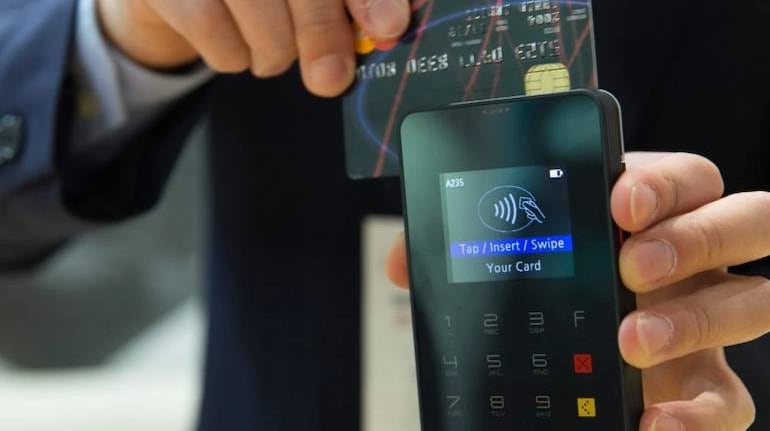
COVID-19 impact | Consumers move to debit cards from credit cards
In June, 12.5 crore credit card PoS transactions were recorded, as against 20.3 crore in January.
by Moneycontrol NewsSince the lockdown, spending has shifted to debit cards from credit cards as consumers pause larger purchases and use debit cards to pay for groceries, utilities and other essential products and services.
Spending from credit cards was Rs 42,818 crore in June 2020, lower than the value of Point of Sale (PoS) transactions from debit cards was Rs 47,255 crore, according to data released by the Reserve Bank of India (RBI).
The value of credit card transactions in June was 36 percent lower than Rs 67,002 crore recorded in January 2020. Debit card spending in June was nearly 24 percent lower when compared with Rs 62,153 crore in January.
According to the RBI data, spending from debit cards was higher than the value of credit cards transactions in March, April and May of 2020, a reversal of the trend recorded in January and February.
COVID-19 Vaccine
Frequently Asked Questions
View more
How does a vaccine work?
A vaccine works by mimicking a natural infection. A vaccine not only induces immune response to protect people from any future COVID-19 infection, but also helps quickly build herd immunity to put an end to the pandemic. Herd immunity occurs when a sufficient percentage of a population becomes immune to a disease, making the spread of disease from person to person unlikely. The good news is that SARS-CoV-2 virus has been fairly stable, which increases the viability of a vaccine.
How many types of vaccines are there?
There are broadly four types of vaccine — one, a vaccine based on the whole virus (this could be either inactivated, or an attenuated [weakened] virus vaccine); two, a non-replicating viral vector vaccine that uses a benign virus as vector that carries the antigen of SARS-CoV; three, nucleic-acid vaccines that have genetic material like DNA and RNA of antigens like spike protein given to a person, helping human cells decode genetic material and produce the vaccine; and four, protein subunit vaccine wherein the recombinant proteins of SARS-COV-2 along with an adjuvant (booster) is given as a vaccine.
What does it take to develop a vaccine of this kind?
Vaccine development is a long, complex process. Unlike drugs that are given to people with a diseased, vaccines are given to healthy people and also vulnerable sections such as children, pregnant women and the elderly. So rigorous tests are compulsory. History says that the fastest time it took to develop a vaccine is five years, but it usually takes double or sometimes triple that time.
In June, 12.5 crore credit card PoS transactions were recorded, as against 20.3 crore in January. The number of debit card transactions declined to 30.2 crore in June from 45.8 crore in January.
"In metros, credit card spending has taken a hit as malls and travel was completely shut during the lockdown. While conventional spending in big retail was impacted, we have seen an excellent pickup in digital spending in smaller retail outlets in metros and in small cities. In all these small-ticket transactions, it is largely the debit cards that were used," Pine Labs CEO Amrish Rau told The Times of India.
"While there has been a drop in discretionary spending compared to the pre-COVID period, we are actually seeing a growth in EMI on card payment, which is used for the purchase of electronics, when we compare numbers with the year-ago period," Rau added.
For a large part of the lockdown, which began on March 25, sale of essential items only was permitted. Gradual lifting of restrictions, or Unlock, began in June.